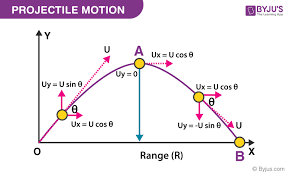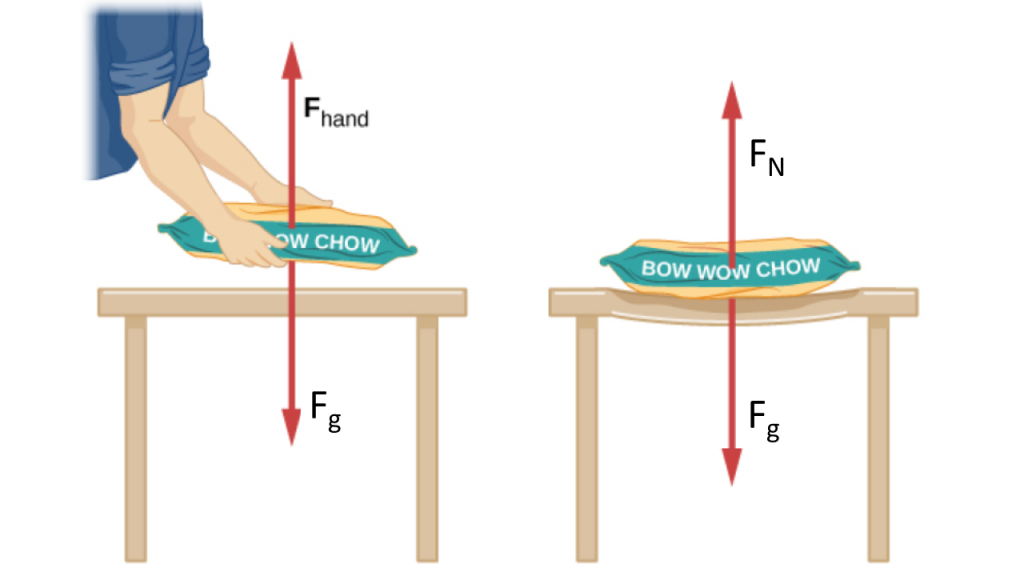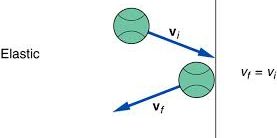Mechanics Physics - Topic 2
Bite-sized Mechanics Study Notes for IB Physics HL/SL
Table of Contents

Table of Contents
Key point
- All Kinematic Quantities describe motion and depend on the frame of reference.
Kinematics – the study of motion. In order to study motion, we must first define some key quantities that describe motion in all its varieties.
- Position – the place where an object is relative to other objects (Vector Quantity)
- The Frame of Reference must be defined (or implied) in order to figure out an object’s position
- Time – how long does it take to perform a certain action?

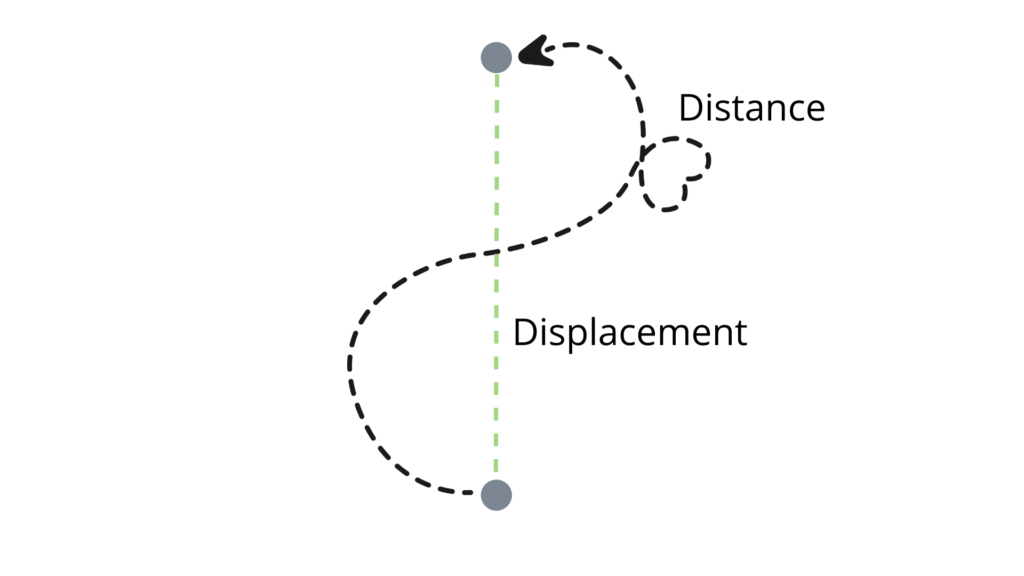
- Displacement is the change in position. Displacement describes “how far, compared to its initial position, a given object has come”. (Vector Quantity)
- Distance is the length of the path followed. Distance describes “how much ground an object has covered” (Scalar Quantity)
- Velocity is the change in position over the change in time. Velocity is displacement over time. (Vector Quantity)
- Speed is the length of the path followed over time. Speed is the distance over time. (Scalar Quantity)

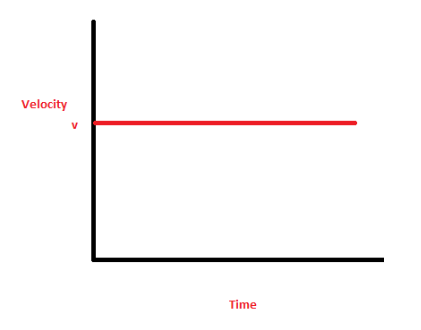
In uniform motion the speed/velocity is constant. (by definition)
Suppose that at t = 0, s = initial position
and that at t = something, s = final position.
Then we have the following definition for velocity:

Key points
- In uniformly accelerated motion the velocity is changing
- Acceleration is the rate of change of velocity
In uniformly accelerated motion the velocity is non-constant.
- The graph of velocity vs. time is a non-horizontal straight line.


Acceleration is the rate of change of velocity.
- If velocity is not changing, then there is no acceleration
- Acceleration is a vector quantity
Suppose we choose a time interval from t = 0 to some arbitrary time t later.
Let the velocity at time t = 0 (initial velocity) be u and the velocity at time t be v (final velocity). Then we get the following expression for acceleration:

Formula Booklet
- Rewriting the expression above leaves us with the formula booklet expression.
- The final velocity is equal to initial velocity plus the acceleration the object experienced during a given time interval
Key point
- Instantaneous velocity is the velocity of an object at an instance of time
In uniform motion the velocity is constant. In non-uniform motion the velocity is non-constant.
- The instantaneous velocity – the velocity at any instance of time – is different than average velocity.
- Instantaneous velocity is a vector quantity
- The magnitude of the instantaneous velocity is the instantaneous speed.
- Instantaneous velocity is what your car’s speedometer measures.
- Instantaneous velocity is a vector quantity
- Mathematical representation of the instantaneous velocity (don’t need to know)
- Calculation of instantaneous velocity requires calculus.
Frequently Asked Questions:
- How to find/calculate instantaneous velocity?
- Graphically: draw a tangent line at that point of the velocity time graph.
- The slope of the tangent line is the instantaneous velocity of the object at that point
- Mathematically: you cannot use the traditional kinematic equations.
- Requires calculus (see video above).
- Graphically: draw a tangent line at that point of the velocity time graph.
- Can instantaneous velocity be negative or zero?
- Yes! The directional properties of instantaneous velocity are the same as that of regular velocity.
- What is the difference between instantaneous velocity and instantaneous speed?
- Instantaneous speed is the absolute value of instantaneous velocity.
- Does not have direction.
Key point
- The four fundamental kinematic equations can be used to solve for the basic kinematic quantities of almost every motion problem
Defining Variables:
- u is the initial velocity.
- v is the final velocity.
- a is acceleration.
- t is time.
- s is displacement
- The i subscript is for initial; f for final.
In most kinematics problems, you will be tasked with finding the value of one of these variables with the equations below.
- More complex scenarios ask you to find more than one of these variables.
Formula Booklet
- This equation uses the final velocity given the initial velocity, the acceleration, and the time interval
- Often the initial velocity is 0.
- Derivation of the equation
- The area under a velocity vs. time graph is the change in position (displacement)
- The gradient of a velocity vs. time graph is its acceleration.
- The y-intercept is the initial velocity.
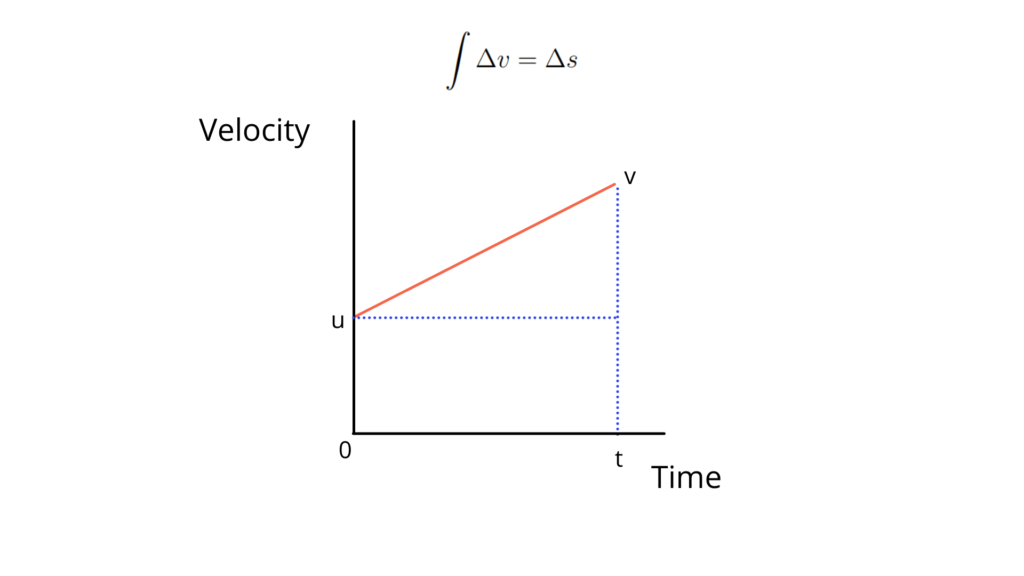

Formula Booklet


- Solving for the area of the velocity vs. time graph we get following equation:
- Remember that the initial displacement is often 0
- Notice how acceleration is not needed for this equation
- Use whenever acceleration is not given.
- Through combining the first two formulas and some basic algebra we get following formula:
- Remember that the initial velocity is often 0
- Notice how final velocity is not needed for this equation.
- Use when final velocity is not given.
Formula Booklet
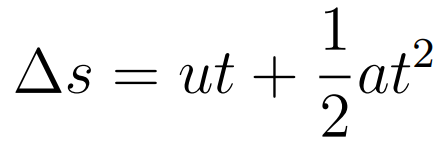

Formula Booklet


- Through combining the first two formulas and some basic algebra we get following formula:
- Remember that the initial velocity is often 0
- Notice how time is not needed for this equation
- Use when time is not given.
Key points
- The acceleration of free fall is g = 9.8ms-2
- The acceleration is roughly the same at all points close to the earth.
As discussed in a previous notes section, acceleration occurs when a force is applied to an object. This includes the force of gravity that the earth exerts on any object in its gravitational field.
- What is the value of acceleration due to gravity? The gravitational acceleration is 9.8 ms-2.
- In Paper 1 gravity is assumed to be 10ms-2
- The variable for gravitational acceleration is g, rather than a.
- Often, it is not given, rather, the student is assumed to know it.
- The gravitational acceleration always points downward (towards the earth’s center/surface)
- The gravitational acceleration is only 9.8ms-2 on the earth.
- Different planets have different gravitational accelerations, due to their different masses and sizes affecting the properties of their gravitational fields.
Key points
- Projectile motion is the motion of an object in the air that is only subject to gravitational acceleration
- Independence between horizontal and vertical motion
Projectile Motion is the motion of an object in ‘free’ air that is only subject to gravitational acceleration.
- Horizontal and vertical components (acceleration or velocity) are independent
- Assume ball a is dropped (with no vertical component of velocity) and ball b is launched horizontally (with no vertical component of velocity), then they fall the same distance in the same time
Not in Formula Booklet but important
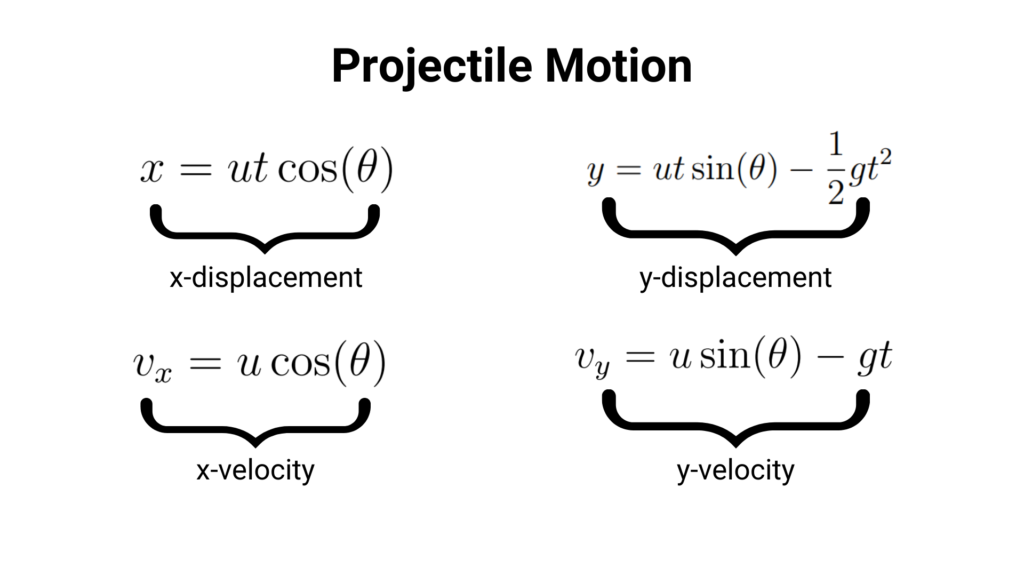

The Kinematic Equations are the same – but used for each component (vertical/horizontal)
- At the peak of a projectile motion path, the potential energy is maximum and the kinetic energy is 0
- Vertical acceleration is always the same (or it will be explicitly stated to be different)
- What goes up must come down
- Projectile motion paths are symmetric
Key point
- When a body moves through a fluid it experiences fluid resistance force
Fluid resistance force is the force a body experiences when traveling through a fluid.
- Directed opposite to the velocity
- Air resistance is a type of fluid resistance
- Reality vs. Theory (in general air resistance is neglected in IB Questions. If not, then it’s stated explicitly that it’s not)
Not in Formula Booklet but important
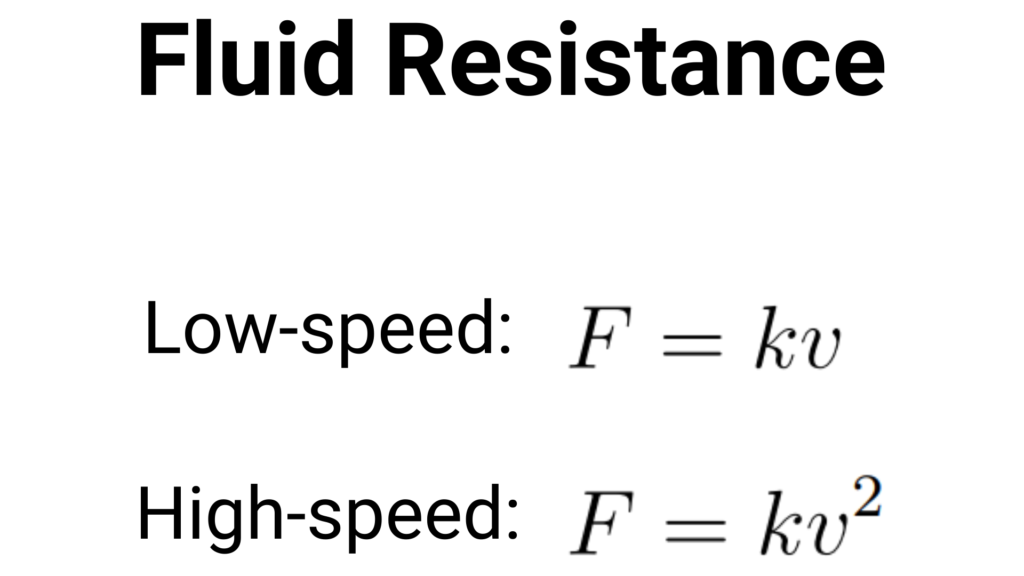

Fluid resistance equations
- k is a constant – depending on the fluid resistivity
- There is no limit for which the high-speed formula is used over the low-speed formula. It depends fully on the question and common sense
- As higher the velocity – as higher the resistive force
Suppose we drop a ball from some height.
- The ball’s speed increases due to the gravitational acceleration (weight)
- As the speed increases, the fluid resistance increases too (in this case air resistance)
- Fluid resistance increases until it equals the weight of the ball
Terminal speed formula


Key point
- Forces are Vectors
All forces are vectors. The net force determines the direction of the object’s acceleration.
- Even if the net force is zero, there might be forces with opposing (canceling) directions
- Always calculate all components of all forces
Key points
- This force is always directed downward
- It depends on the location of the object
Weight is the gravitational attraction between the mass (m) of a body and the mass of the planet it is on.
- The force is always directed downward
- Like all other forces – this is a vector quantity
- g is the acceleration due to gravity – Units: Newton per Kilogram
Not in Formula Booklet but important
Key point
- The force that arises when a body is stretched
Tension is the force that arises when a body is stretched
- Contact Force
- A tension force in a string is created when two forces are applied in opposite directions at the ends of the string
- Tension occurs when the contact forces that exert the force are a rope, chain, string, or cable
- Tension is a pull-force
Key point
- A pulled string will develop tension –> bring the string back its original length
When a spring is pulled (increase in length), then a tension will develop.
- The tension develops because it wants to bring the string back to its original position
- Tension is opposite to the direction the string is pulled towards
Not in Formula Booklet but important


Hooke’s Law
- Tension is the opposite of displacement
- T = tension
- k = spring constant
- x = displacement
Key point
- Perpendicular to the body exerting the force
The Normal Reaction occurs when a body is in contact with another body.
- The normal reaction force is acting perpendicular to the two surfaces in contact
- It’s a measure of the force that is holding both objects together
- Notice how the table is bending downwards (microscopic level) – creating tension
Key points
- Oppose the direction of a body
- The area of contact between two surfaces doesn’t affect the magnitude of the frictional forces
Frictional Forces exist when there exists a contact force between two objects.
- Frictional Forces generally oppose the motion of a body
- The area of contact between two surfaces doesn’t affect the magnitude or direction of the frictional force
Formula Booklet


- Dynamic Friction does not depend on the speed of sliding
- R = normal reaction force
- μd = coefficient of dynamic friction
- Acceleration is a vector quantity
- R = normal reaction force
- μs = coefficient of static friction
- μs > μd
Formula Booklet
Key point
- Shows direction and magnitude of all forces acting on a body
Free-body Diagrams show the magnitude and direction of all forces acting on a body
- The body is shown on its own
- Free of surroundings or any other bodies
- The body is treated as a point particle
- The length of arrows is proportional to the magnitude of the forces
Key points
- When no forces act on a body, then it moves with constant velocity
- If body A exerts a force on body B, then body B will exert an equal but opposite force on body A
- The net force on a body of constant mass is proportional to that body’s acceleration
Newton’s second law (law of Inertia) states: When the net force on a body is zero, the body will move with constant velocity (which may be 0).
Force definition: A force is what changes a body’s velocity.
- Inertia keeps the body in the same state of motion when no force acts on the body
Formula Booklet


Newton’s second law of motion states: The net force on a body of constant mass is proportional to that body’s acceleration and is in the same direction as the acceleration.
- Unit of force: newton (N)
- One newton is the force required to accelerate a mass of 1kg by 1ms-2 in the direction of the force
Newton’s third law of motion: If body A exerts a force on body B, then body B will exert an equal but opposite force on body A.
- Those forces are known as force pairs
Key point
- Net force on a point particle is 0
The equilibrium of a point particle means that the net force on the particle is zero.
The net force on a particle is the one single force whose effect is the same as the combined effect of all individual forces acting on the particle
- Find all vector components and add/subtract them as necessary
- If you know Fx and Fy then use the formula on the right
Not in Formula Booklet but important
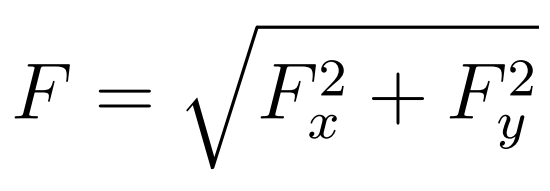

Key point
- Energy is neither created nor destroyed
Conservation of Energy: Energy is neither created nor destroyed, but is only transformed from one form to another.
- A system’s energy may change as a result of interactions with its surroundings
- Mainly: Work done or transfer of thermal energy (heat)


Key point
- Work done by a force is the product of the force times the distance travelled
- F = Force
- W = Work
- s = distance
- Θ = angle between force and displacement
- Unit: Joule
- One Joule is the work done by a force of 1 N when it moves a body a distance of 1 m in the direction of the force
- 1 J = 1 Nm
Formula Booklet


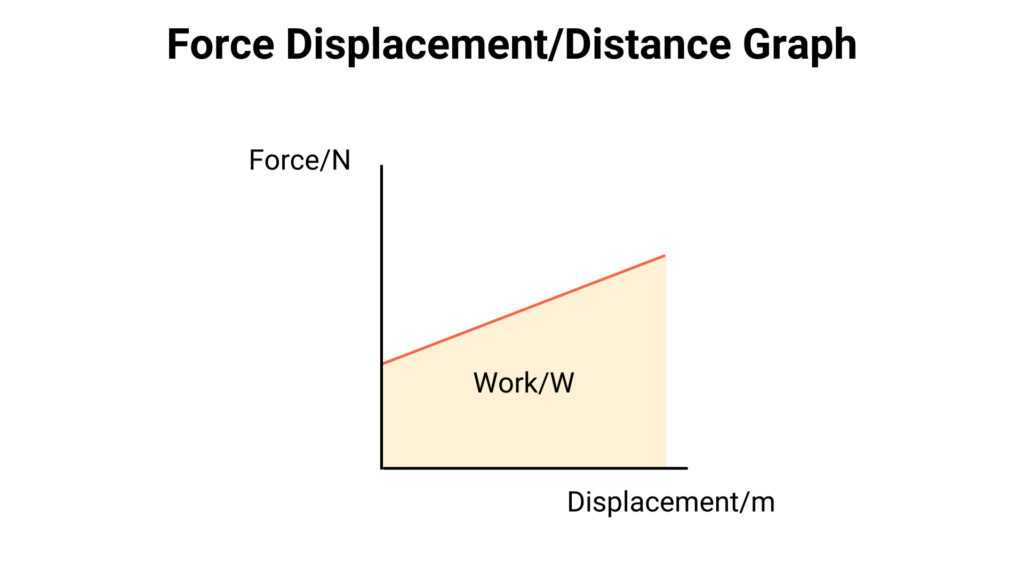

The work done by a force is the area of a force/displacement graph.
Since F = kx and Work is the area under the force-displacement graph the resulting equation is
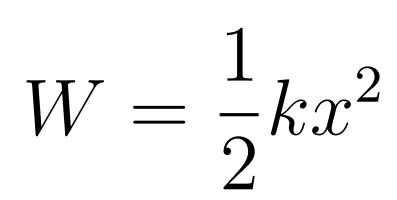

- Work done becomes Elastic Potential
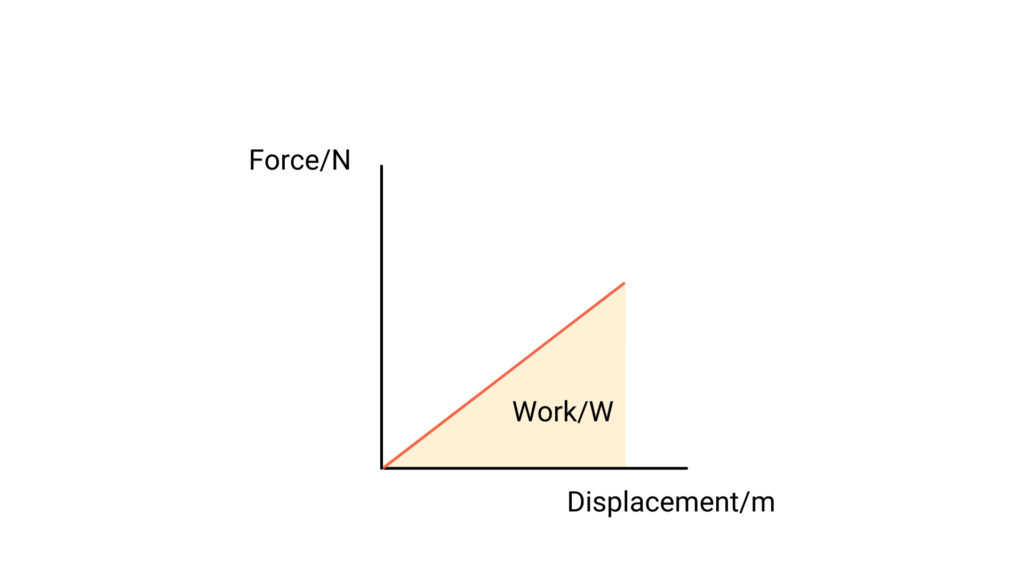

- m = mass
- g = gravity
- s = displacement
- Θ = angle made when the body falls
- Work done by gravity is independent of the path followed
- Work done by gravity depends solely on the vertical distance separating the initial and final positions
- that is true for all conservative forces
Not in Formula Booklet but important
Work done by gravity


Key point
- Mechanical Energy is the energy possessed by an object due to its position and motion
Mechanical Energy is the energy possessed by an object due to its position and its motion.
Potential Energy is the energy of a system due to its position or shape and represents the work done by an external agent in bringing the system to that position or shape.
Kinetic Energy is the energy an object possesses because of its motion.
There are two major kinds of potential energy:
- Elastic Potential Energy is the work done by pulling the spring by an amount x.
- k = spring constant
- x = displacement
Formula Booklet
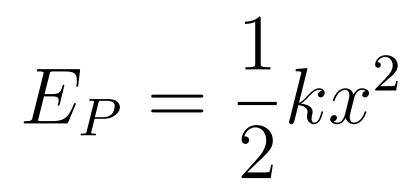

Formula Booklet


There are two major kinds of potential energy:
- Elastic Potential Energy
- Gravitational Potential Energy is the work done by the moving force in placing the body at a height h above its initial position.
- m = mass
- g = gravitational acceleration
- h = height
Potential Energy is the property of a system, not of an individual particle.
Kinetic Energy is the energy an object possesses due to its motion.
- Kinetic energy is always positive or 0
- Kinetic energy is a scalar
- m = mass
- v = velocity
Formula Booklet
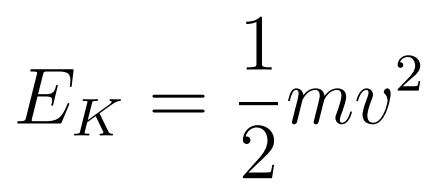

Not in Formula Booklet but important


If the system in question is in contact with its surroundings at a different temperature then there will be a transfer of heat, Q.
If there is no contact or no temperature difference, then Q = 0.
For a single particle of mass m following equation is true.
- Notice how when kinetic energy is at its maximum, potential energy must be at its minimum
- This structure is the foundation is almost all energy questions
Not in Formula Booklet but important


Key points
- The rate at which work is being performed
- The rate at which energy is being transferred
Power is the rate at which work is being performed or the rate at which energy is being transferred.
- When a Quantity of ΔW is performed within a time interval Δt the power developed is given by:
Not in Formula Booklet but important
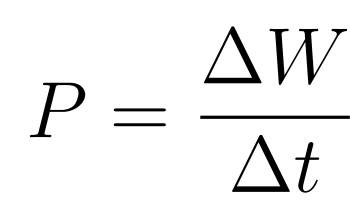

Formula Booklet


- Rewriting the expression above leaves us with the formula booklet expression.
- Unit: joule per second, which results in watt (W)
- 1 W = 1 J/s
Key point
- Comparison between energy input and energy output
- Rewriting the expression above leaves us with the formula booklet expression.
- The final velocity is equal to initial velocity plus the acceleration the object experienced during a given time interval
Efficiency is the comparison between energy input and energy output.
- Efficiency can not be negative
- Remember the law of conservation of energy
Formula Booklet




Key point
- The net force is the rate of change of momentum
Linear Momentum is defined as the product of an object’s mass and velocity.
- Linear Momentum = P
- Linear Momentum is directly proportional to the object’s mass and velocity.
- Momentum is a vector and has a direction of the velocity
- Units: kgm/s or Ns
Formula Booklet


Formula Booklet
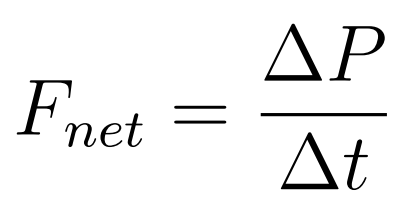


The average net force on a system is equal to the rate of change of the momentum of the system.
- Understand the connection to newton’s second law of motion
Key point
- Impulse is a change in momentum
Impulse is defined as the certain amount of force you apply at a given time interval.
- Impulse is a vector quantity (direction is that of the force)
- Unit: Ns (Newton-second)
- Area under a force-time graph = impulse
- Impulse is sometimes denoted by J
Not in Formula Booklet but important


Key point
- If the net force is 0, then the momentum doesn’t change
Conservation of Momentum states that if the net force on a system is 0, then the momentum doesn’t change either. Thus it is conserved.
- If Fnet = 0, then Δp = 0
- Thus there is no change in momentum
- Conserved means ‘constant’ or ‘not changing’
Formula Booklet



Key points
- Kinetic Energy is conserved – elastic collision
- Kinetic Energy is not conversed – inelastic collision
In a collision or explosion, Kinetic Energy may or may not be conserved.
- The total momentum is always conserved (conservation of momentum)
- Through substitution one can obtain following equation:
Formula Booklet
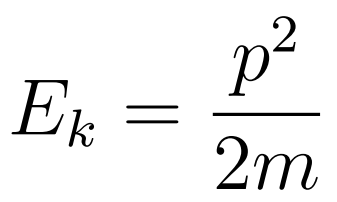

Worksheet - Mechanics Physics
Key point
- Remember the fundamentals!
Subscribe to the Inertia Newsletter
IB News, Covid-19 Updates, Deadlines, Tips and Tricks, and Hundreds of Free Resources are Awaiting You!
Features
- Study Notes
- Thousands of IB Questions
- Detailed Answers

